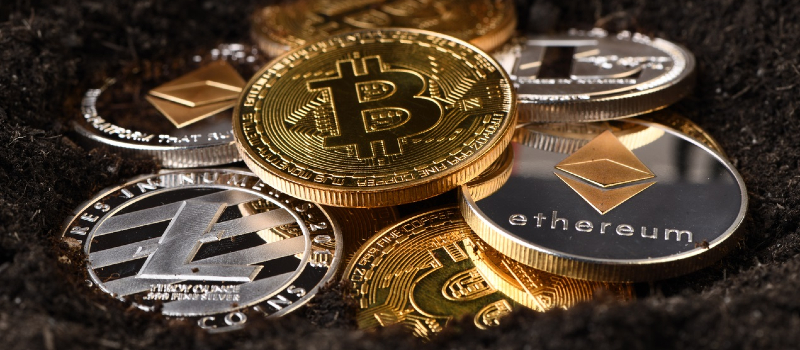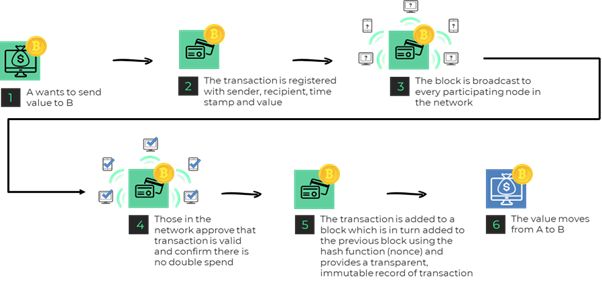
Cryptocurrency, or crypto, is any form of currency that exists digitally or virtually and uses cryptography to secure transactions. Cryptocurrencies don't have a central issuing or regulating authority, instead they use a decentralised system to record transactions and issue new units. We ask Simon Jones, a treasury consultant, to provide an overview on crypto and why corporate treasuries use it.
Crypto is currently one of the hottest topics in finance & banking; whether it’s a good investment or not has divided many in the industry. The prudent treasurer is right to be highly concerned about its volatility and safety or even if it can be used as a payment instrument. Treasurers, especially those working for B2C companies, are getting asked by their commercial and marketing teams to be able to accept crypto currency and in some cases being given tight timescales to implement a process and policies. The drivers for this can also be regulatory, for example in El Salvador companies are legally required to accept Bitcoin if their clients wish to pay with it. So - whatever your business, the chances are that the issue of crypto transactions will appear in your treasury inbox sooner or later.
So firstly, what do we mean by crypto currency?
Crypto currency is a digital currency in which encryption techniques are used to regulate the generation of units of currency and verify the transfer of funds, operating independently of a central bank.
The underlying technology is based on blockchain. Blockchain is a system of recording information in a way that makes it difficult or impossible to change, hack, or cheat the system. A blockchain is essentially a digital ledger of transactions that is duplicated and distributed across the entire network of computer systems on the blockchain. The diagram below shows how a blockchain is used to move value from one party to another. In the case below it is using Bitcoin, but it could be many other types of digital currency on a blockchain e.g. Ether.

Source: https://www.freepik.com/free-vector/infographic-blockchain-concept_24636...
This transfer of value is instantaneous and will increasingly be used to speed up commerce in a digital economy. Whilst, the transfer of value might be instantaneous, the crypto asset itself has a value that is very volatile and the ability to exchange into a fiat (central bank issued e.g US Dollar) currency or stable coin has a significant risk that needs to be managed.
As commerce moves increasingly from a physical world to a virtual digital world, the traditional tools of exchange of value are not suitable and user expectations are changing. Digitally native consumers and businesses want to spend wealth created, in a world that combines both their virtual and physical lifestyle. Think about someone wanting to buy a pair of limited-edition trainers and wanting to “wear” them around town, but also when they are in their virtual world or “metaverse”, e.g. gaming platforms. Other examples could be a Supercar being sold with an “Non fungible token” (NFT), that might last longer than the wear and tear life of the car.
These consumers, and sometimes businesses, are consuming in new ways and this is driving brands to combine the sale of a product with a virtual asset or NFT attached to that product. Buyers of NFT’s prefer to use crypto savings to purchase these digital tokens.
As product, brand, and marketing managers push into new channels to tap into this new digital demand, treasury needs to work with those innovators inside their organisations to put in place safe channels and controls for collecting the proceeds from NFTs or even from physical assets and/or services. This is likely to mean that when an NFT is sold it will be via an NFT marketplace and the blockchain that marketplace works on is likely to have one or more crypto currencies it will accept for payment, e.g. Ether on Ethereum. Brands selling NFTs will need to have an account at a crypto exchange to receive these Ether proceeds and potentially convert into fiat currency.
Many treasurers, especially in the U.S., have put arrangements in place including opening crypto wallets with large, publicly listed and regulated crypto exchanges. These types of crypto exchanges are more transparent and will have bank regulator standard KYC & AML processes is place. This often means the wallet account opening process is no easier than opening an account at an international bank, so be prepared for the due diligence to take a while. It is also important to review the KYC & AML processes at the NFT marketplace as ultimately the consumer buying the NFT will need to go through that due diligence, before bidding on an NFT asset. Also note that some crypto exchanges are also becoming NFT marketplaces, which should help combine due diligence and make it a little easier.
This is not easy to do and due to the volatility of certain crypto assets, even if it can be hedged, the cost of the hedge will likely be very prohibitive. In practice like normal treasury risk management practises for an emerging market currency, the crypto is collected and converted immediately into a hard or fiat currency. Many of the crypto exchanges have an auto convert capability in place but what are the margins being charged or can the margins be negotiated. The resulting fiat proceeds can then be remitted to a traditional transaction bank for the entity performing the sale of the NFT, product or service. It is always prudent to do a test transaction as some banks may restrict proceeds in fiat originating from a crypto exchange.
The use of crypto currencies is increasingly going to be required by the underlying businesses corporate treasury supports and a foundational knowledge, paired with preparation is key to managing the ongoing innovations and associated risks. The default of, ‘we don’t need to accept crypto’, is unlikely to be sustainable in the future and Treasurers should expect the requirement for crypto settlement to start appearing in multiple industries as the metaverse grows in adoption.
This article was written by Simon Jones, FCT, Treasury Consultant http://linkedin.com/in/simonmichaeljones
